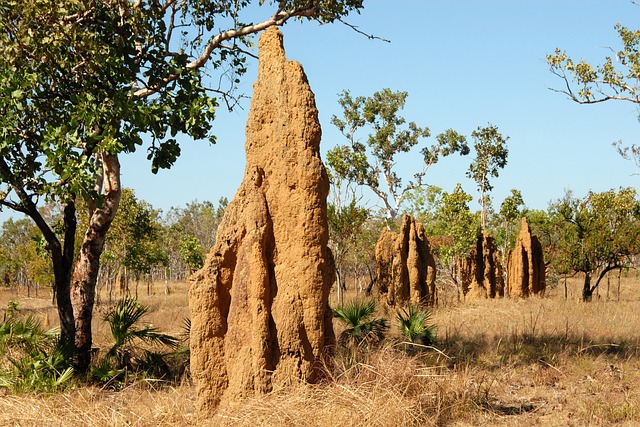In response to environmental and health concerns linked to traditional chemical pesticides, commercial termite control is transitioning to sustainable practices. Modern approaches emphasize eco-friendly solutions like biopesticides, natural repellents, and integrated pest management (IPM). IPM combines biological, mechanical, and targeted chemical interventions to holistically manage infestations while preserving ecosystems. Driven by regulatory requirements and consumer demand for greener alternatives, this shift benefits both the environment and businesses through reduced ecological impact, cost savings, and enhanced structural integrity. Effective implementation requires a multi-faceted approach including regular inspections, early detection, non-toxic termiticides, and specialized professional services.
In the realm of commercial termite control, understanding the current landscape is paramount. Traditional methods, while effective, often rely on harmful chemicals, raising concerns about environmental impact and human safety. This article explores eco-friendly solutions for targeted termite management, highlighting benefits like reduced ecological disruption and enhanced sustainability. We delve into implementation strategies that enable businesses to adopt green practices, offering a safer, more responsible approach to protecting commercial properties from these relentless pests.
Understanding Commercial Termite Control: The Current Landscape
In the realm of commercial termite control, understanding the current landscape is paramount for fostering sustainable practices. Traditional methods often involve chemical pesticides, which, while effective in the short term, can have detrimental environmental and health impacts. Termites are integral parts of many ecosystems, playing a crucial role in nutrient cycling and soil formation. Therefore, modern approaches emphasize eco-friendly solutions that minimize these negative effects without compromising on safety and effectiveness.
Commercial termite control today is characterized by an evolving landscape where biopesticides, natural repellents, and integrated pest management (IPM) strategies are gaining traction. These methods leverage the strengths of natural enemies like fungi, bacteria, and predators to combat termites. IPM combines these biological solutions with mechanical and chemical interventions, ensuring a holistic approach that targets not just the current termite infestation but also prevents future invasions. This shift towards sustainability is driven by both regulatory pressures and consumer demand for greener alternatives in various industries, including construction and real estate.
Eco-Friendly Solutions for Targeted Termite Management
In the pursuit of sustainable practices, eco-friendly solutions for targeted termite management are gaining traction in both residential and commercial termite control. Traditional methods often rely on toxic chemicals with potential environmental and health impacts. However, modern approaches emphasize natural barriers and non-chemical treatments to mitigate termite infestations. One such strategy involves utilizing beneficial insects, such as nematodes, that parasitize or kill termites, offering a safe and effective alternative to pesticides.
Commercial termite control now incorporates integrated pest management (IPM) principles, focusing on prevention, monitoring, and targeted interventions. This includes implementing physical barriers like steel mesh or chemical-free soil treatments. Additionally, biopesticides derived from natural sources are being used for their selective toxicity towards termites while minimizing harm to non-target organisms and the environment. These eco-friendly methods not only promote sustainable practices but also contribute to overall ecosystem health.
Benefits of Sustainable Practices in Termite Mitigation
Adopting sustainable practices in termite management offers a multitude of benefits, both for the environment and for businesses. Unlike traditional chemical-heavy commercial termite control methods, eco-friendly solutions prioritize minimizing ecological impact while effectively controlling termite populations. By using natural barriers, beneficial insects, and organic treatments, these methods reduce soil and water contamination, preserve local ecosystems, and mitigate risks to human health.
Additionally, sustainable termite mitigation strategies can lead to long-term cost savings for businesses. They promote the health and longevity of treated structures by addressing the underlying conditions that attract termites, such as wood moisture issues and poor construction practices. This proactive approach not only reduces the need for frequent chemical treatments but also enhances a building’s structural integrity, ensuring a safer and more sustainable environment for both occupants and the surrounding ecosystem.
Implementation Strategies for Effective, Green Termite Control
Implementing eco-friendly strategies for commercial termite control requires a multi-faceted approach. One key strategy is integrated pest management (IPM), which integrates biological, cultural, and chemical methods to minimize the reliance on synthetic pesticides. By promoting natural predators like nematodes and fungi, using repellents derived from plants, and implementing physical barriers, IPM offers a safe and sustainable solution for termite control. Regular inspections and early detection are also vital; identifying signs of termite activity promptly allows for targeted treatments, minimizing environmental impact.
Additionally, using non-toxic termiticides that are biodegradable and less harmful to beneficial insects can significantly reduce ecological disruption. Opting for eco-friendly options not only benefits the environment but also ensures the safety of nearby water sources and ecosystems. For commercial properties, employing specialized professionals who understand these green methods is crucial for effective and responsible termite control.
In conclusion, embracing eco-friendly solutions for commercial termite control presents a promising path towards sustainable pest management. By targeting specific species with minimal environmental impact, we can effectively protect structures without compromising ecological balance. Adopting green practices not only benefits the environment but also offers long-term cost savings and enhanced reputation for businesses. With proper implementation strategies, these eco-friendly methods prove to be game-changers in the termite control industry, ensuring a safer, more sustainable future.
